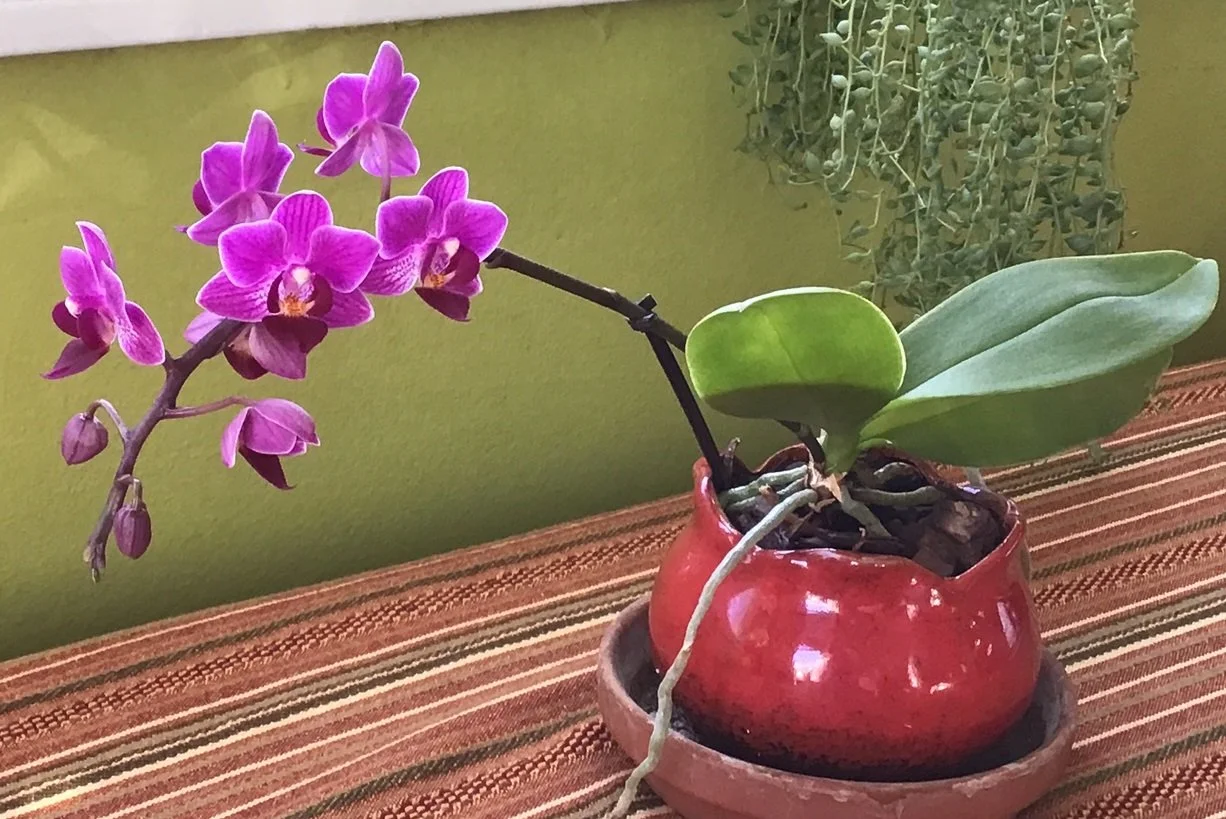Ten Plants That Flower During Boston Winters
In January, when it’s dark before 5PM in Boston, I often think about the episode of Broad City in which Ilana totes her sun lamp all over New York City so she can plug it in every chance she gets and bask in itsglow. Suffice it to say, winter in New England can get a bit bleak, which is one of many reasons plants are so amazing. They can change the vibe of a space so completely you just might forget it’s below zero outside. If you have a home office, cubicle, lounge, lobby, or any similar space in the Boston area, see how Maison Green can help you fill that space with color, light, and life.
It’s pretty magical to have thriving plants in your home when all the leaves have fallen and the flowers outside have died. The closest I get to a walk in the forest in the winter is when I go from room to room watering all my plants. Happy plants add warmth, coziness, and beauty to spaces, which can be a game- changer during the seasonal doldrums. Some plants will even grace you with blooms during the winter, producing small miracles in the midst of snow and sleet.
What are some plants that flower during the winter in Boston?
Thanksgiving/Christmas/Easter Cactus
Sarah holds her grandmother’s Christmas cactus.
These holiday cacti help spruce up spaces from November to April, depending on which type you have. They don’t always abide by their names—a Thanksgiving cactus might bloom closer to Halloween, or an Easter cactus might bloom closer to Valentine’s Day, but hey, we’re not complaining!
2. Cyclamen
These winter bloomers seem mixed up—they like to go dormant in the summer and flower profusely in the winter. They come in many colors and their flowers have a unique, windsock-like shape. Do beware if you have pets: cyclamen are toxic.
3. Rhipsalis
Joelle’s rhipsalis aurea from underside.
Many types of these “tropical cacti” bloom in the winter. Here’s mine, which lives in the bathroom and has been sporting adorable yellow flowers for most of January.
4. Kalanchoe
This succulent sports dense clusters of blooms that can be white, pink, orange, and many other colors. It blooms in late winter, and like some of these others (including cyclamen and holiday cacti), they can be induced to bloom again by ensuring they get 12-14 hours of darkness—we’ll call it beauty rest—for roughly 6-8 weeks during the fall.
5. Orchids
One of Joelle’s January bloomers
Orchids, particularly phalaenopsis (moth) orchids, are reliable winter bloomers when well-tended (checkout our orchid blog for tips!) Colder night temperatures induce flowers on these beauties.
6. Amaryllis
Tulips, daffodils, and many other outdoor flowers come from bulbs, so why shouldn’t there be a few houseplants that follow suit? Amaryllis are easy to grow—give them light and water and you’ll be rewarded with colorful, gorgeous flowers.
7. African Violets
Joelle’s blooming African violet
If properly cared for, African violets bloom year-round. They might need a little supplemental lighting or humidity in the winter, and they’ll reward you for it.
8. Narcissus
Like amaryllis, narcissus plants, also called paperwhites also grow from bulbs planted indoors in the winter (they’re part of the amaryllis family) They’re similarly easy to grow and sport beautiful white flowers.
9. Frizzle Sizzle (albuca spiralis)
Joelle’s frizzle sizzle
These plants are as fun as their name. The curly blades of grass (which hail from South Africa) are aesthetically pleasing by themselves, so the tall flowering stalks are really a bonus!
10. Anthuriums
Image credit: N. Perrault, via Wikipedia (CC 4.0)
These low-maintenance plants provide waxy, lipstick-red flowers throughout the year, including in the winter. They’re called “flamingo flowers” for good reason!
If any of these sound like a good fit for your office (or for your home), just let Maison Green know and we’ll schedule a consultation! Brighter days are ahead.






